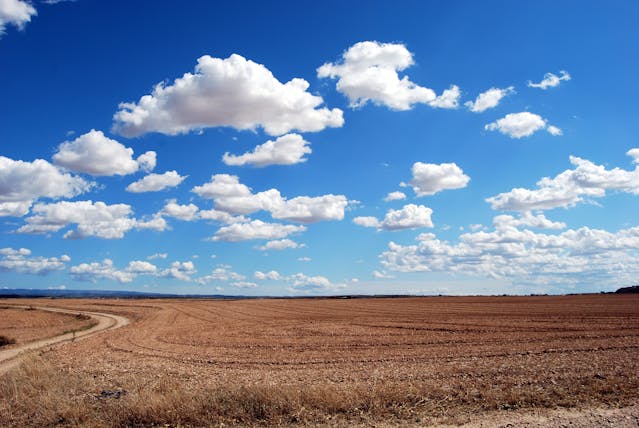
Why is carbon dioxide the main greenhouse gas? Carbon dioxide is the main greenhouse gas because it absorbs more heat than other gases.
When we think of greenhouse gases and climate change, we think of carbon dioxide, but it is not the only greenhouse gas. All of these gases are obviously produced naturally, but human activities account for far more than the normal levels of them in the atmosphere. Carbon dioxide is the main gas, making up 79.7% of all greenhouse gases. Methane is next, coming in at 11.1%. Then nitrous oxide makes up 6.1%, and the last 3.1% is made up of fluorinated gases, such as hydrofluorocarbons. Methane is produced when coal, natural gas, and oil are produced and transported. It is produced by livestock and it is produced when organic waste decomposes in landfill sites. Nitrous oxide is produced by agriculture, especially from fertilizers. It is also produced when fossils fuels are burned and when sewage is treated. Hydrofluorocarbons are used in refrigeration, air-conditioning, building insulation, fire extinguishers, aerosols, and many other places.
Greenhouse gases are a very small percentage of all the gases in our atmosphere. 78% of the gas is nitrogen, 21% oxygen, 0.9% argon, and 0.1% other gases. All of the greenhouse gases fit into this 0.1%, which is a startlingly small amount. It is amazing to think that such a small quantity of greenhouse gases can have such a big impact. The two main gases in the atmosphere, nitrogen and oxygen, are not greenhouse gases because they do not absorb heat.
What do greenhouse gases do? They absorb heat and release it back towards Earth, warming up the planet. When the energy from the sun comes through our atmosphere and hits the ground it is absorbed. Some of the light is released of heat, a lot of it is released as radiation in the visible light spectrum that we can see, but most of it is radiated back as infrared light energy. Infrared energy has a wavelength of between 700 and 1,000,000 nanometers. Oxygen and nitrogen molecules are both simple and are made up of two atoms that are the same. They don’t move much and they don’t absorb energy in the 700 to 1,000,000 nanometer range. The infrared light just goes straight past them without being absorbed. However, carbon dioxide and the other green house gases are made of more atoms that are from different molecules and they can move a lot more. They can get in the way of the infrared light and they can absorb it. Carbon dioxide absorbs energy between 2,000 and 15,000 nanometers, which is the higher end of infrared light. When a molecule absorbs energy, the energy goes into the electrons and it makes them move to a higher orbit. Electrons don’t like having more energy and they try to release it as soon as possible so that they can go back to their original plane. When the carbon dioxide electrons release this energy, they release it as heat. About half of the heat goes up into space and the other half is redirected back down towards the Earth. The heat that is redirected back down to Earth warms up the planet.
We do need carbon dioxide in the atmosphere because without it all of the heat from our planet would float out into space and the seas would freeze and life would be impossible. However, too much is not good. Millions of years ago there was far more carbon dioxide in the atmosphere and the temperature of the Earth was much higher than today. There was no ice and the sea levels were a lot higher. There have also been times when the levels were lower and the planet cooled down. The problem we have right now is that we are releasing much more carbon dioxide into the atmosphere through our actions than would be natural and we are speeding up the process of the planet warming. That means the ice will melt and the seas will rise and there is not much we can do about it. It is going to be hard. Carbon dioxide is the main greenhouse gas because there is so much of it. And as the ice melts, more and more is released into the atmosphere, speeding up the process. And this is what I learned today.
Photo by Pixabay: https://www.pexels.com/photo/brown-field-and-blue-sky-46160/
Sources
https://lamont.columbia.edu/news/how-exactly-does-carbon-dioxide-cause-global-warming
https://education.nationalgeographic.org/resource/atmosphere
https://team-planet.com/en/about/climate-change/greenhouse-gases-will-take-you-by-surprise

Pingback: #1073 How does carbon dating work?